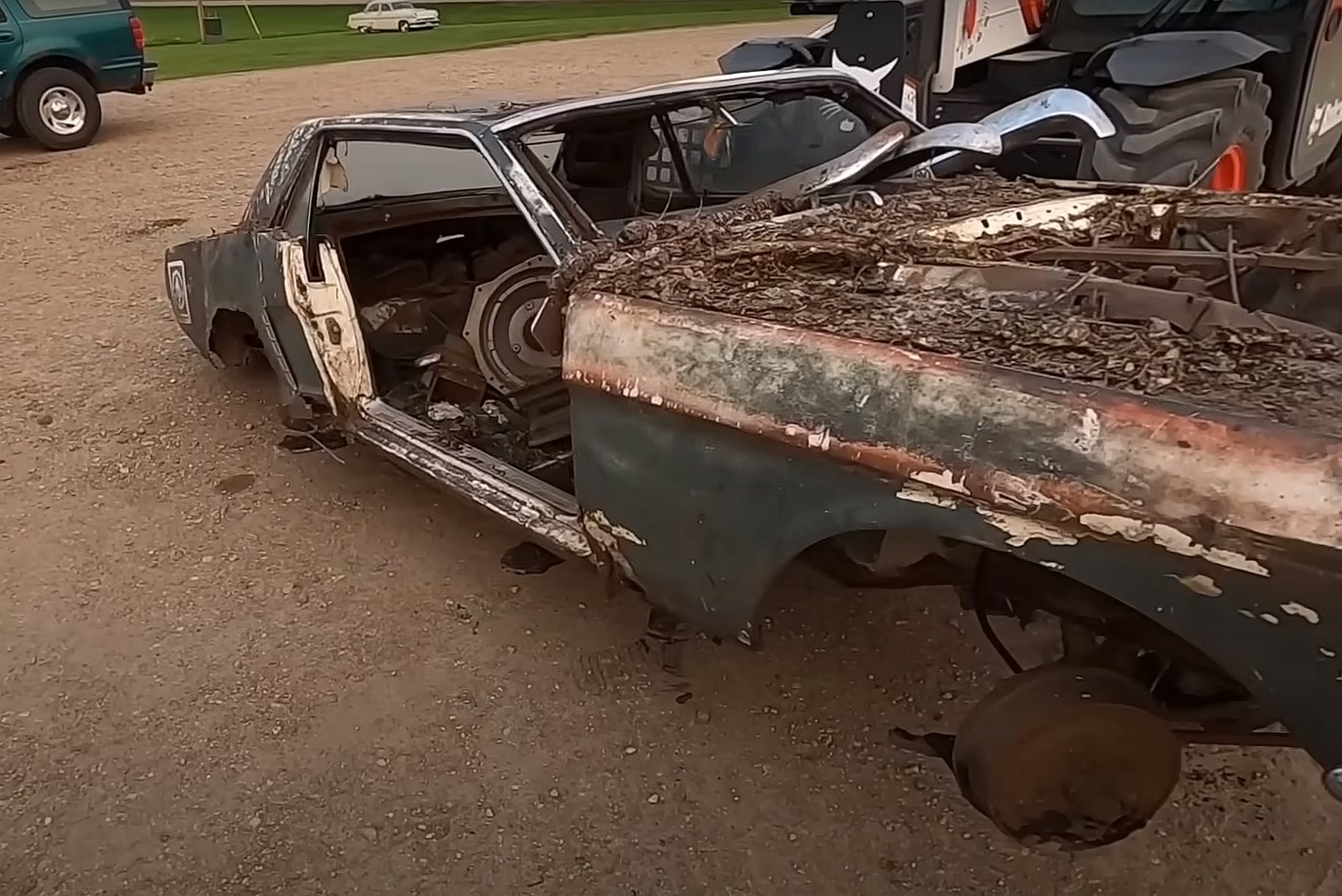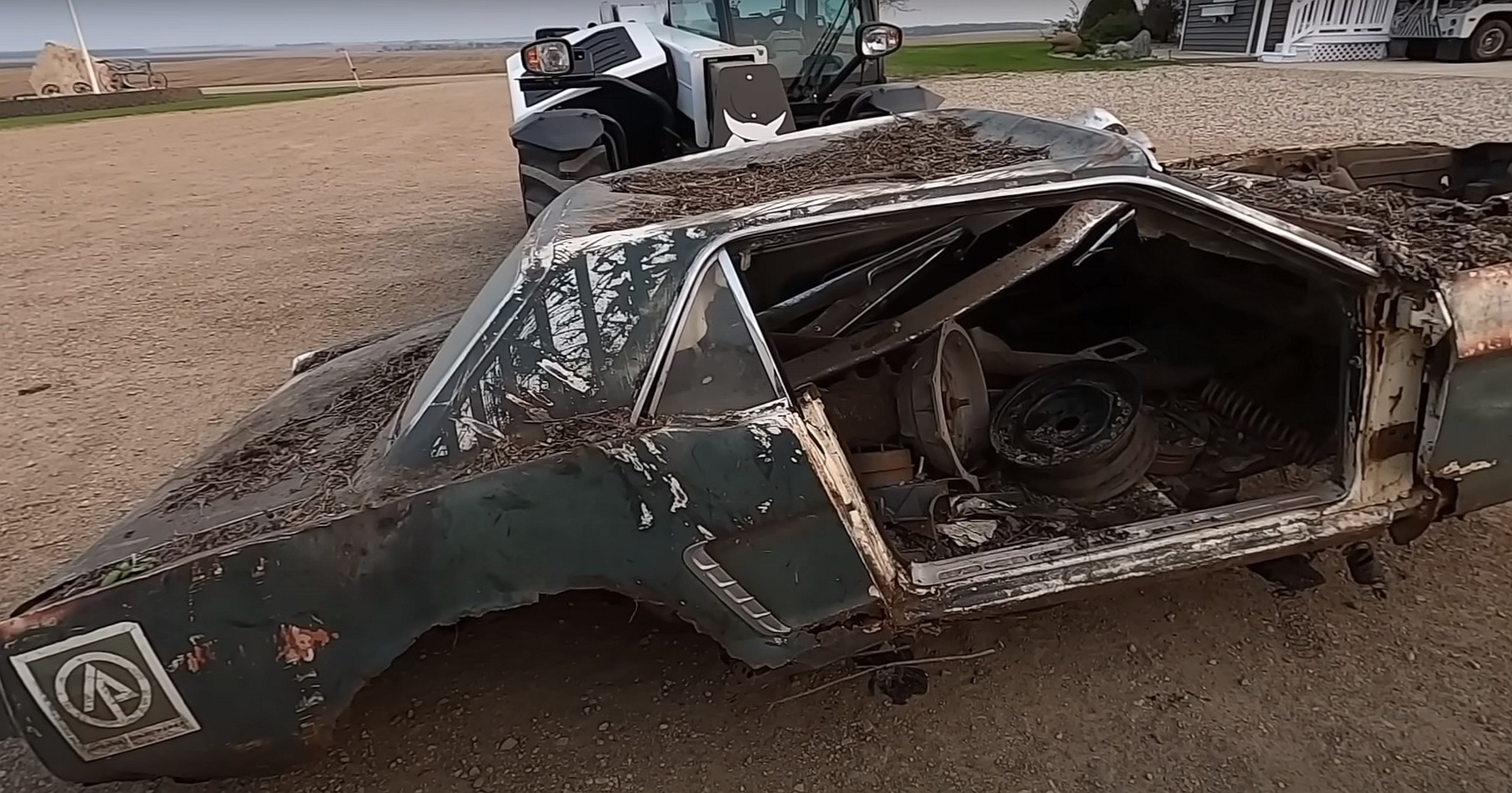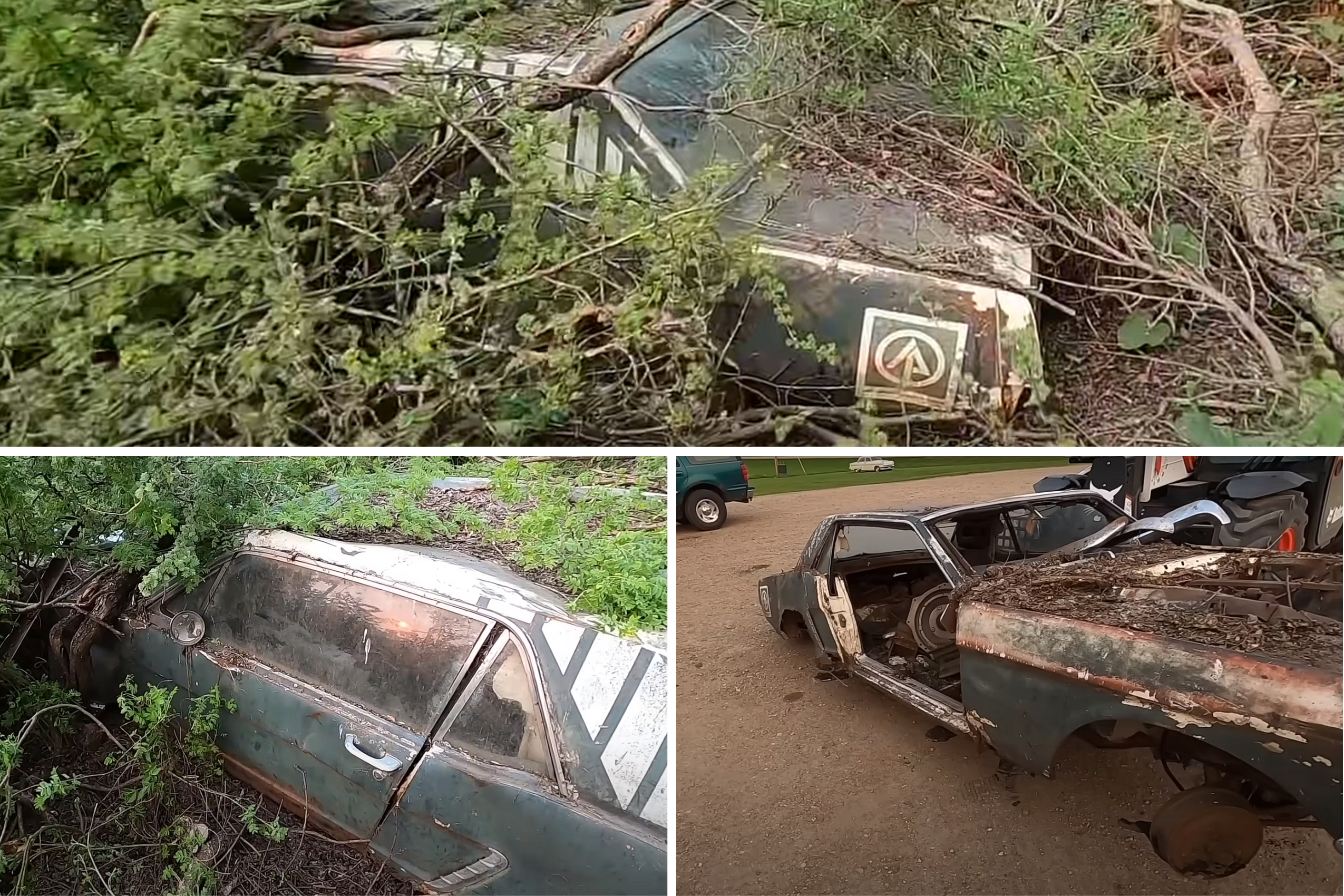Keeping a classic car in a barn is a big no-no if you still want to be able to drive it after a few years. But it’s definitely a better option than dropping it off in the woods, leaving it fully exposed to the elements. This 1964 Ford Mustang sat just like that for a whopping 48 years, and it’s pretty much a rust bucket. Why would anyone leave a prized classic to rot away like that? Well, it may be unthinkable in 2023, but it wasn’t all that strange 50 years ago.
Simply because 1960s Mustangs weren’t viewed as classics in the 1970s. Much like millions of Chevy Tri-Fives were junked in the 1960s after only a decade on the road (or at the drag strip). I have no idea why this Ford was abandoned for good, but it was last driven in 1975, according to the license plate. This means it sat for 48 years, which pretty much explains the terrible condition it was found in.

And by “terrible,” I mean severe rust issues, a missing passenger door, no engine and transmission, and an interior loaded with drivetrain parts and junk. It’s the kind of classic worth saving only for a handful of parts. In this case, I’d say the chrome trim, the driver-side door, and the trunk lid are among the very few components that could be sourced for a Mustang project.
The wreck is also a bit of a mystery. Finished in a shade of green that wasn’t common on Mustangs in 1964, it sports International Paper decals on the rear fenders and white stripes on the roof and the C-pillars. It almost looks like a race car that’s been abandoned when its motorsport career ended. However, no signs of race-specific upgrades such as a roll-cage or suspension modifications exist.

Our host managed to get some info on the car from a previous owner following a post on social media. It turns out the Mustang was originally white and had a 289-cubic-inch (4.7-liter) V8 under the hood. The owner shared that he painted it green and added the white decals but didn’t mention racing it. So perhaps it was just a way to customize a pony to look like a race car. The livery reminds me a bit of late 1960s SCCA Trans-Am cars. The series was very popular then and could explain this beat-up Ford’s appearance.
So is this 1964 Mustang getting a second chance at life? Sadly, the answer is no. The car is simply too far gone, and a restoration wouldn’t make sense financially. Even if 1964 Mustangs are rarer than the versions that followed. Sure, a production run of about 121,000 units doesn’t make it rare, but Ford sold more than 500,000 examples in 1965 and over 600,000 Mustangs in 1966. But even though it won’t make it back on the road, this Mustang will donate some parts to an ongoing project. All told, this Ford’s spirit will live on in a different car. And that’s better than rotting away somewhere in the woods.
